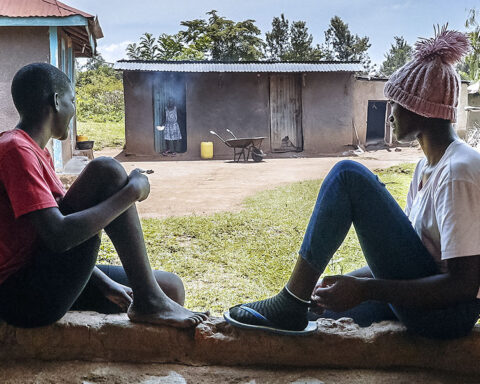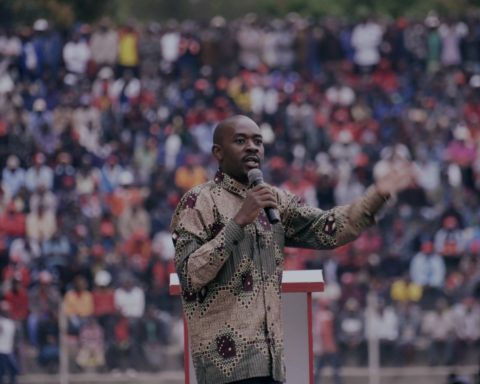Ghostland: The View of the Ju/’Hoansi
(Germany, 84 min.)
Dir. Simon Stadler
The gods must be crazy seeing all the conveniences that humans have nowadays. Science ovens, Wi-Fi, iThings, and cars that drive themselves are all markers of both the progress and decline of humankind. Living in blissful ignorance of the Internet and phones with email sounds strange, but some corners of the world still endure with the basic principles of a hunter/gather society. Even in these corners, however, the times are a-changing.
Doc fans witness such a culture shock in Ghostland: The View of the Ju/’Hoansi. This intriguing doc follows members of the Ju/’Hoansi tribe, aka the Bushmen of Namibia, as they investigate the cultural practices of their neighbours in communities both local and global. The bushman find themselves thrust into a time of change when the Namibian government decrees that they may no longer hunt and live off the land. The rule means that this relatively isolated culture must reconsider its way of life.
The Ju/’Hoansi take some field trips of their surrounding area to see how the neighbours adapt with the times. On one level, this research expedition simply means that the Bushmen hop on a bus and visit a nearby tribe. They discuss their customs and tell one another what they must do to earn this thing called “money” that controls their ability to provide food. The tribes dance for one another and show mutual respect, but when the Ju/’Hoansi visit a resort and perform a similar ritual on the dance floor, tourists whip their cameras while staff watch in frustration. The Bushmen use the space for the purpose for which it was designed—dancing—but they seem like fish out of water as the onlookers gawk.
Although a German production, director Simon Stadler and his team let these residents of the Kalahari tell the story on their own terms. Ghostland plays like a cross between the 1980 comedy The Gods Must Be Crazy, in which an airdropped Coca Cola bottle begins an awakening, and the short-lived reality series Amish in the City, in which groups of hot young Amish teens bust out of their traditional ways and go wild in New York City. Unlike the spectator sport of the latter, the film takes a mostly observational approach as it watches the tribe make a living by putting on a show for white tourists who come to stare and take pictures with the Bushmen. The “othering” happens within the frame as the tourists take pleasure in this old way of life, but the film gives power back to the Ju/’Hoansi as they play up their habits, like bow hunting and dancing, to earn some dollars from the tourists while mocking the foreigners’ ignorance in a language they can’t understand. Ghostland, much like Ulrich Seidl’s entitled-white-folks-on-parade doc Safari, is often funny in its observations. The film shows levels of privilege and entitlement as life for one becomes a souvenir for another.
Ghostland lets the Ju/’Hoansi play the tourists, too, as a quartet of Bushmen fly to Germany for an educational/reconnaissance tour. In Europe, Stadler turns the touristic view 180 degrees as the Ju/’Hoansi take in western living. The four Jo/’Hoansi find the luxuries of indoor plumbing and clean water a blessing, while electricity and mattresses offer contemporary comforts that they consider bringing back to the bush. On the other hand, the four find the city to be overwhelming with its scale, density, and energy. All the vertical buildings block the sun, while the sparse “bush” (aka a few trips on a strip of grass) leaves much to be desired. Similarly, the synthetic composition of the city shows the effects of industry and consumption as artificial lights dull the frame in comparison to the bright natural palette of the Kalahari.
The film contrasts life in the Kalahari with the hustle-bustle of Germany and Stadler presents two different ways of life that bring their own sets of pros and cons. The film doesn’t romanticise the old ways of the Bushmen, nor does overtly present contemporary culture as the ideal. Ghostland documents communities that exist side-by-side in a spectrum: why force “progress” on those who live contentedly on one pole if their norms don’t harm those living on the other end.
Ghostland: The View of the Ju/’Hoansi opens in Toronto at the Hot Docs Ted Rogers Cinema on December 25.











